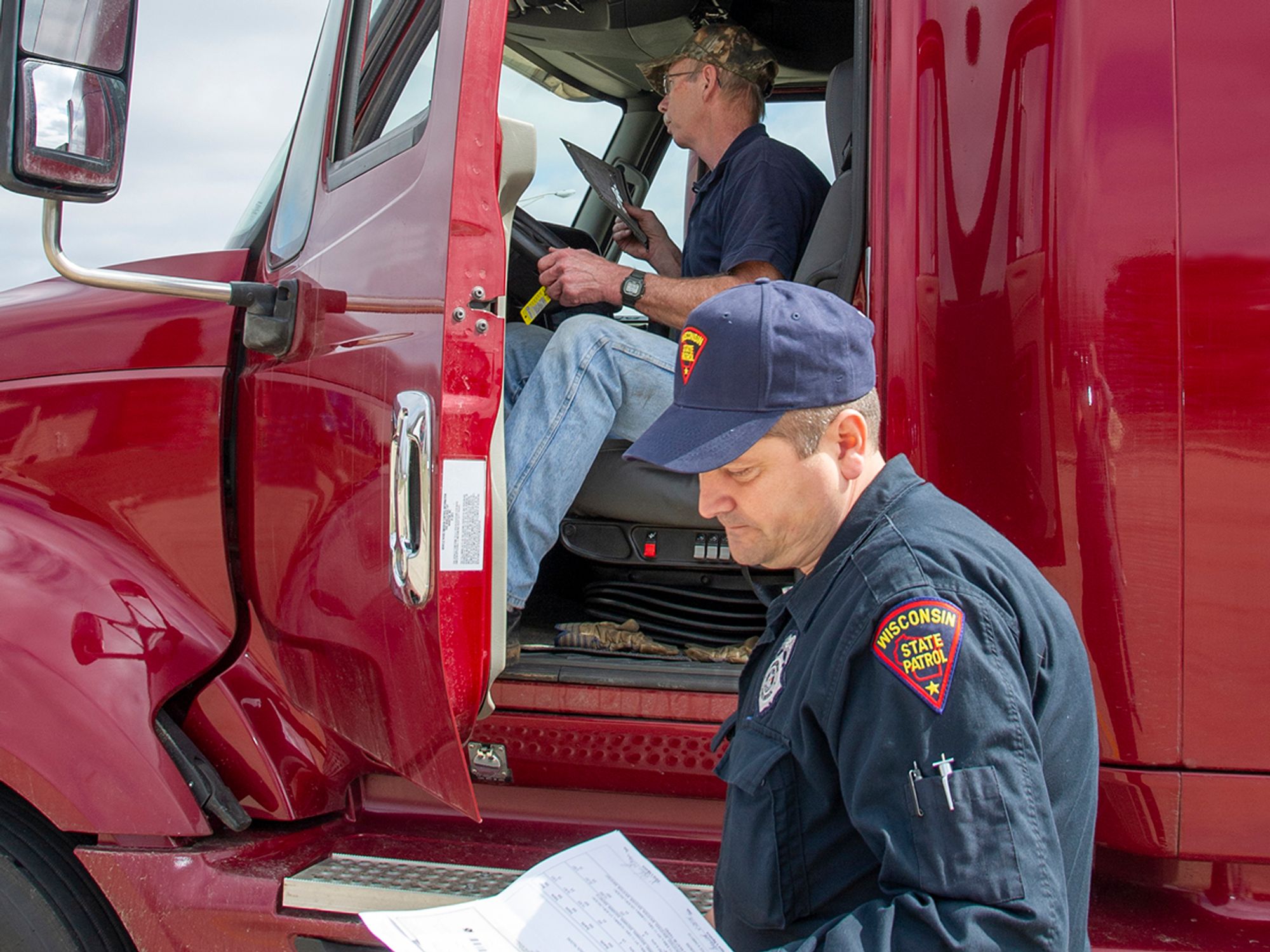Driver inspection process

- When an officer approaches a driver in a vehicle, the officer will be observing the driver and making note of any suspicious behavior.
- During the interview, the officer will prepare the driver for the inspection by giving basic instructions.
- The officer’s observations of the driver and additional information gained by questioning the driver may lead to a fatigue assessment, field sobriety test, examination by an officer trained in drug recognition, a drug or alcohol test, or an arrest.
When approaching a vehicle, an officer will be looking at the general condition of the vehicle and observing the driver (either directly or through the mirrors). If additional vehicle issues become apparent during the approach to the driver, the officer will mentally note them. The more mechanical problems that are seen, the more likely the officer will do a full inspection, rather than a driver-only inspection.
Also, several behaviors will make the officer suspicious of the driver, including:
- Fidgeting excessively,
- Trying to rearrange items in the cab,
- Reaching for something that is out of sight, or
- Trying to stay out of sight of the officer.
How the officer approaches the driver will be affected by any suspicious behavior by the driver as well as the officer’s concern for personal safety.
If there’s suspicious behavior, the officer’s suspicion will continue all the way through the inspection. The officer will try to discover what the driver was trying to hide or change, or the reason for the driver’s unusual actions or anxiety.
When reaching the driver, the officer will greet the driver and begin the interview. To put the driver at ease, many officers attempt to develop a rapport with the driver during this part of the inspection. The officer may ask some general “small-talk questions.” Common questions include:
- What is your name?
- Who do you work for?
- What are you hauling?
- Where are you coming from and where are you going?
- Where and when did you start your day today?
- How many days have you been out?
- What problems have you encountered lately?
The information gathered during this discussion will be compared to other information captured later in the inspection. During the interview, the officer will prepare the driver for the inspection by giving basic instructions. During this time, the officer is also determining if the driver may be impaired by illness, fatigue, drugs, or alcohol. If the driver appears to be impaired, the next step for the officer is to determine the exact problem. Depending on the officer’s initial findings, this could result in:
- A fatigue assessment;
- A field sobriety test;
- An examination by an officer trained in drug recognition (all officers are trained to recognize general signs of drug use, but certain officers have additional training and can determine what class of drugs is involved); or
- An arrest and drug or alcohol test.
